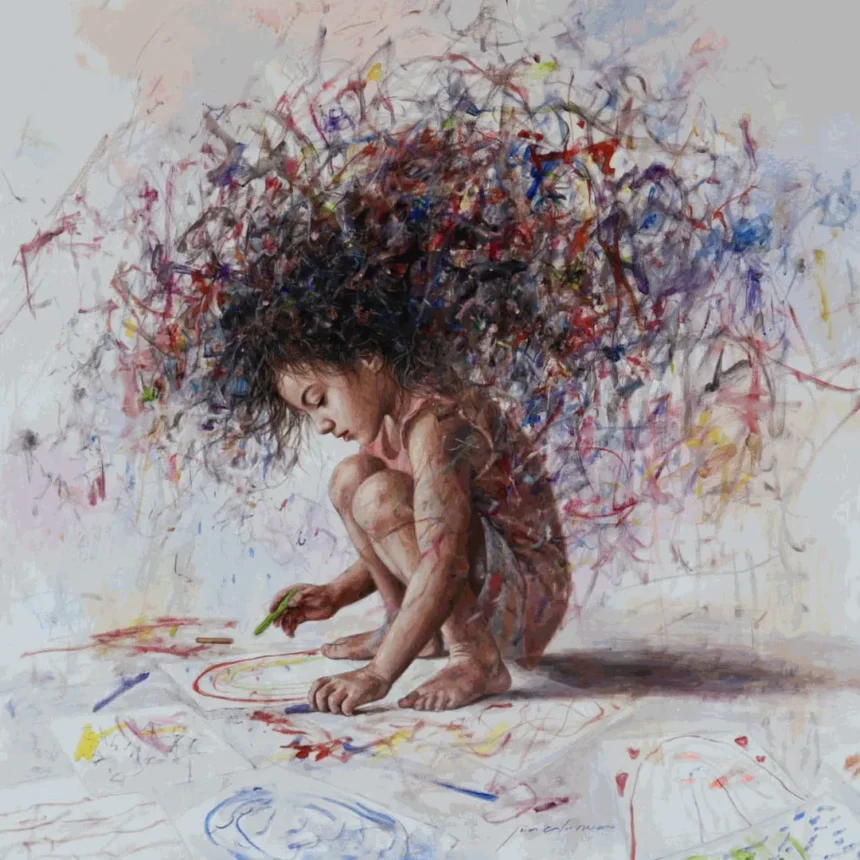When it comes to artistic expression, the surface of a medium holds boundless possibilities. Techniques like throwing, dabbing, and sponging the surface are time-honored methods used by creators across various disciplines, including ceramics, painting, and interior design. These techniques not only add depth and texture but also serve as avenues for exploring unique creative styles. This comprehensive guide delves into the intricacies of these methods, providing insights into their history, application, and how they can be combined to create stunning masterpieces.
Understanding the Techniques
1. Throwing: The Art of Shaping Clay
Definition and Origins
Throwing refers to the process of shaping clay on a potter’s wheel. The term “throwing” originates from the Old English word thrawan, which means to twist or turn. This method has been used for centuries to create functional and decorative ceramic pieces. Throwing Dabbing Sponging the Surface.
The Process of Throwing
- Preparation: Start with a well-kneaded ball of clay to ensure uniform consistency.
- Centering the Clay: Place the clay on the wheel and use your hands to center it as the wheel spins.
- Shaping: Apply steady pressure with your hands and tools to shape the clay into the desired form.
- Refining: Once the basic form is complete, refine the details and smooth the surface.
- Drying and Firing: Let the piece dry before firing it in a kiln to harden it.
Applications of Throwing
- Functional Pottery: Bowls, vases, and mugs.
- Decorative Pieces: Sculptural works and artistic ceramics.
- Foundation for Other Techniques: Throwing often serves as the base for additional textural methods like carving, dabbing, and sponging.
Skills and Tools Required
- Tools: Potter’s wheel, shaping tools, and trimming tools.
- Skills: Steady hand coordination, an understanding of clay properties, and patience to master the spinning process.
Also Read: HOLEWOR Biometric Bedside Safe
2. Dabbing: Adding Intricate Textures
Definition and Techniques
Dabbing is a method of applying material, such as paint or glaze, onto a surface using a stippling or pressing motion. This technique is widely used in painting, ceramics, and even interior design to create intricate patterns and textures.
Dabbing in Action
- Choosing the Medium: Select the paint, glaze, or material to be dabbed.
- Tool Selection: Use brushes, sponges, or even fabric for dabbing.
- Application: Dab the tool lightly onto the surface to create patterns. Adjust the pressure for different effects.
- Layering: For more complexity, apply multiple layers of dabs in various colors or textures.
Applications of Dabbing Throwing Dabbing Sponging the Surface
- Painting: Used for foliage, clouds, or abstract details.
- Ceramics: Applied glazes for uneven, artistic finishes.
- Interior Design: Faux finishes, such as marble or stucco effects.
Advantages of Dabbing
- Easy to execute and adapt for beginners.
- Allows for experimentation with colors and textures.
- Works well with other techniques like sponging.
3. Sponging: A Versatile Texturing Method
Definition and Purpose
Sponging involves using a sponge to apply or remove material from a surface, resulting in a textured or blended appearance. This method is particularly popular for creating organic, natural-looking patterns.
Sponging Techniques
- Material Selection: Choose a natural or synthetic sponge based on the desired texture.
- Applying Material: Dip the sponge into the medium and press it onto the surface.
- Removing Material: Alternatively, use the sponge to lift material off the surface, revealing underlying layers.
- Blending: Use sponging to blend colors or soften transitions between different areas.
Applications of Sponging
- Painting: Creating gradients, clouds, and stone-like textures.
- Ceramics: Applying underglazes or highlighting raised details.
- Home Décor: Faux finishes for walls, such as sponged patterns that mimic marble or aged plaster.
Benefits of Sponging
- Offers a high degree of control over texture.
- Suitable for both large surfaces and intricate details.
- Pairs well with other techniques for layered effects.
Combining Throwing Dabbing Sponging the Surface
Integrating Techniques in Ceramics
- Foundation: Start with a thrown base to create the initial shape.
- Dabbing: Apply glazes using a dabbing motion to add texture and color variation.
- Sponging: Highlight raised areas by sponging away excess glaze, creating depth.
Blending Techniques in Painting
- Base Layer: Use sponging to create a soft, textured background.
- Detailing: Add finer details with dabbing, such as foliage or abstract patterns.
- Finishing Touches: Enhance highlights or shadows by layering with additional sponging.
Applications in Interior Design
- Walls and Ceilings: Combine sponging and dabbing to achieve unique faux finishes.
- Furniture Restoration: Use dabbing and sponging to give furniture a distressed or vintage look.
- Accents: Incorporate these techniques on decorative pieces like vases or picture frames.
Tools and Materials for Success
Essential Tools
- For Throwing: Potter’s wheel, trimming tools, rib tools.
- For Dabbing: Brushes, sponges, cloths.
- For Sponging: Natural or synthetic sponges, mixing palettes.
Materials
- Clay, paints, glazes, or plasters, depending on the medium.
- Additional additives like colorants or finishes to enhance effects.
Maintenance and Care
- Regularly clean tools to prevent material buildup.
- Store materials properly to maintain their quality.
- Replace worn-out sponges and brushes for consistent results.
Tips and Tricks for Mastery Throwing Dabbing Sponging the Surface
Throwing
- Practice centering clay, as it’s the foundation of successful throwing.
- Experiment with different clay types to understand their behavior on the wheel.
Dabbing
- Test your technique on a spare surface before applying it to the final piece.
- Use varying brush sizes for a range of textures.
Sponging
- Work in layers to build up complexity and depth.
- Use different sponges for unique patterns and effects.
Common Challenges and How to Overcome Them
Throwing
- Challenge: Uneven clay shapes.
- Solution: Focus on consistent pressure and hand positioning.
Dabbing
- Challenge: Over-saturation of the surface.
- Solution: Dab off excess material on a separate surface before application.
Sponging
- Challenge: Uneven blending.
- Solution: Use a light touch and build layers gradually.
Inspiring Projects Using These Techniques
Ceramics
- Create a set of textured bowls using thrown shapes with dabbed and sponged glazes.
Painting
- Design a landscape painting featuring sponged skies and dabbed foliage.
Interior Design
- Transform a plain wall into a stunning feature with layered sponging and dabbing techniques.
Conclusion
Throwing, dabbing, and sponging the surface are powerful techniques that can transform ordinary materials into extraordinary works of art. Whether you are a ceramicist shaping clay, a painter adding texture, or a designer creating stunning interiors, mastering these methods will elevate your craft. By understanding their nuances, experimenting with combinations, and honing your skills, you can unlock endless creative possibilities.



